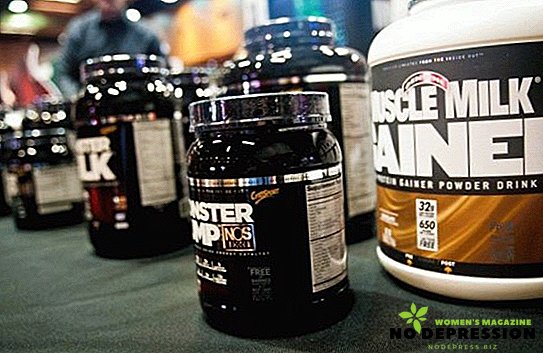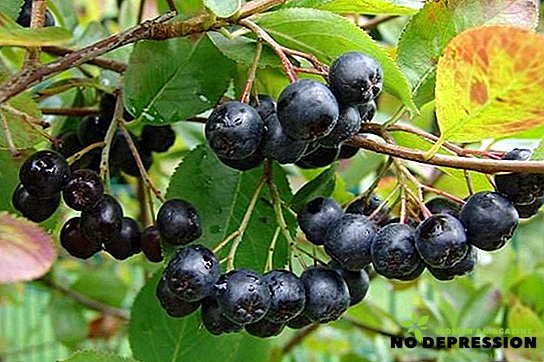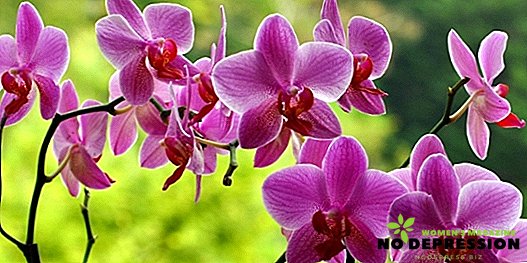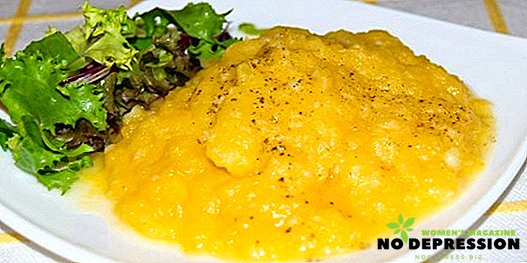You can grow mushrooms at home throughout the year, which gives you a steady income of 12 months a year. It is not so difficult to create conditions for a home mushroom farm, you just have to have the correct information.
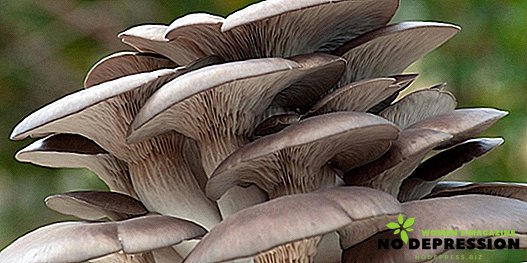
Selection and preparation of premises for planting mushrooms
Oyster mushrooms are grown in 2 ways:
- extensive is the cultivation of mushrooms in natural conditions. This method does not require additional investments, but due to the natural process, the harvest will be only once a year;
- Intense - mushrooms are grown in an artificially created environment and bear fruit year-round, but at the initial stage large investments are required.
Since business requires year-round fruiting of mushrooms, then we will consider an intensive way of growing them. It is worth mentioning that the room for oyster mushroom can be very different: garage, barn, basement.
The most common place is the basement, because it is damp enough, and this mushroom loves dampness.
To use the room under the mushroom equipment, it must meet certain requirements:
- temperature from 10 to 20 ° C meringues sharp drops;
- air must have a humidity of up to 90%;
- the presence of an excellent ventilation system;
- cleanliness and complete absence of mold and pests.

Any problem found during the preparation stage should be resolved before the main stages of mushroom cultivation begin, otherwise the entire crop can be lost. The preparation of the premises takes place in several stages:
- Sealing the premises and installation of the heating system. Usually in the basement they insulate the floor and walls, install 1 heater. For heating a small room that is enough, and the heater is turned on once a day;
- Thinking through the humidification system, since the humidity can increase due to rising groundwater, it is worthwhile to think in advance about the issue of moistening;
- Complete destruction of mold by heating, cleaning and covering walls with antifungal agents;
- Pest Disinsection;
- Final cleaning and disinfection of the room with bleach.
A week must elapse between preparation and placement of the first substrate. In addition to the basement, another separate warm room will be needed, which will be used for the incubation of oyster mushrooms.

How to grow oyster mushroom mycelium
In order to grow oyster mushrooms at home, you only need two things: a substrate or soil for a mycelium and mycelium, a mycelium oyster mushroom. Both of these items can be bought, but this will take time and trust in the supplier, because they do not always guarantee quality.
Another way would be the cultivation of grain mycelium in a separate room, after sterilizing in advance all the equipment. The whole process can be divided into stages:
- Freshly cut oyster mushroom in half and cut a slice out of its leg (top);
- Place the cut part of the fungus in a sterile tube and cork it;
- For 2-3 weeks, leave the tubes with the spores in a warm dark room (temperature not less than 24 degrees);
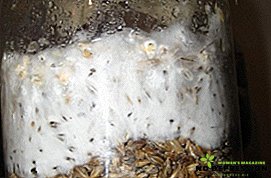
- After 3 weeks, start growing cereal mycelium;
- Pour the grain into the pan, add water and boil for half an hour;
- After cooking, dry the grain and spread it out on sterile 3-liter jars;
- Put all the jars in a large pot and sterilize them;
- Wait until the tanks are completely cooled and place tube spores in each of them;
- Leave the jars in a warm room (20 degrees);
- As soon as a white down begins to form in the banks, the mycelium began to germinate;
- 2-3 weeks after placing the mycelium in the grain, you can start sowing it in the substrate and growing mushrooms.
Instructions for growing mushrooms step by step
Now tell you how to grow oyster mushrooms at home. First of all, you should carefully select suppliers, because the quality of the source material depends on whether there will be a harvest and in what quantity.
Mycelium should not have green spots inside, its color is bright orange. The shelf life of the purchased mycelium is 2-3 months.
The process of growing oyster mushrooms at home consists of several stages:
- Processing of the material for the substrate: the raw material is placed in a tank, filled with water and boiled for 1.5 hours. Then it is filtered and placed under pressure, where the substrate cools down to 25 ° C, while the capacity must be with holes so that excess liquid flows;
- After all the water has been drained, the substrate bags are placed in a sterile room and the mycelium is placed in a nutrient medium;
- During the laying of the mycelium, the ventilation must be turned off so that mold spores do not get into the bags;
- Before the laying process, the room and work surface should be sanitized;
- The process of laying is simple: on the working surface mix the mycelium and the nutrient medium so that the mycelium is 3-5% of the total amount of the medium in the case of domestic production and up to 2.5% of imported mycelium. The mixture is tightly compacted in bags of 5-15 kg;
- Bags should be flattened slightly from one side and made cuts from the other for the germination of mushrooms;
- Cut the bag with a clean knife at an angle of 45 degrees. Each incision should be no more than 5 cm;
- The blocks are placed in the room so that the sides with the cuts are turned inside the room and there is air access to them.

Due to the correct design of the premises and the observance of the rules, when the mycelium is transplanted into the nutrient medium after a couple of weeks, it will be possible to harvest the oyster mushrooms.
How to form mushroom blocks
The process of placing the mycelium in the soil is an extremely capacious process that requires compliance with certain rules and conditions. Mycelium is stored in the refrigerator and 4 hours before it is transplanted into the soil, bags of spores should be taken out and allowed to warm to room temperature. The formation of mushroom blocks is as follows:
- The temperature of the substrate should be around 20-24 degrees, and the mycelium should be at room temperature;
- Hands should be well sanitized and sterile gloves should be worn;
- All the dishes with the instrument are subject to disinfection so that bacteria and fungi do not get into the mycelium;
- In an enamel or plastic container, knead the mycelium to individual grains;
- Into the plastic bag pour the substrate and add mycelium to it: 300 grams of spores for 1 block;
- Spores are well distributed throughout the block and the layer is well compacted;
- Pour the substrate to the top of the bag;
- You can either place the mycelium in layers in a bag, or mix it in advance on the desktop with the medium and then fall asleep in the bags;
- Tie all the bags with sweat and put them in places;
- On each bag with one side facing the room, make 5 cuts 5 cm long;
- Cut the corners of the block so that the moisture can go out freely.

At this process of formation of the mushroom block is completed. It is worth remembering only about thorough disinfection of the room, hands and devices, as well as the fact that the components must have a room temperature.
Conditions during the incubation period
The incubation of oyster mushrooms takes from 18 to 25 days. All this time, mycelium should not be in the basement, but in a separate dry and warm room. The incubation period is very reverent, therefore careful observance of all conditions is required:
- the temperature in the room should be constant, without differences and not more than 30 degrees;
- the room must have dim light and sufficient moisture;
- during incubation there should be no drafts in the room;
- if the temperature rises and is more than 30 degrees, then all mycelium will die;
- clean every day with bleach to prevent mold.
As soon as the oyster mushrooms begin to bear fruit, they are transferred to the room for cultivation.
Fruiting and harvesting nuances
The most fascinating process is the process of fruiting mushrooms. As soon as the first mushrooms begin to appear, you can calm down - it means that the process of incubation and cultivation has passed correctly. Once the bags have been moved to the cultivation room, you should:
- reduce the temperature to 10 ° C;
- turn on the lighting for 8-10 hours daily;
- increase humidity up to 90-95%;
- turn on the ventilation system up to 4 times daily.

The issues of ventilation and humidity should be solved at the stage of preparation of the premises so that in the process of growing mushrooms there are no problems with these items. Fruiting oyster mushrooms - 10-15 days.
During this time, beginnings of fungi begin to appear, and at the end of this period, already full oyster mushrooms are placed on the bags. As soon as the caps become large enough, you can collect them, and it is better not to cut the mushrooms, but to twist them.
Once the harvest has been gathered, the room should be well ventilated and expect a second harvest after 14 days. Conditions must remain the same.
As soon as the bags ceased to bear fruit, they should be replaced with new ones. The used substrate is perfect for farmers to fertilize the soil.
Possible problems
Like any farming, mushroom farming has its own common problems. Usually mushroom pickers are found with:
- The poor development of the mycelium is most likely due to either the poor quality of the mycelium or non-compliance with the conditions for ripening. Check the room temperature and remove excess moisture from the bags;
- Poor mycelium mycelium - this is due to improper temperature conditions or the presence of infections;
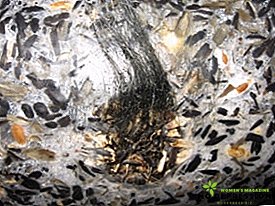
- Spots on the mushroom block are a process of mold development that occurs due to abnormal temperature, poor quality mycelium. A small infection can be removed and covered with salt in its place, but a large defeat will lead to infection of the entire unit and the rest of mycelium, therefore, this bag will have to be removed completely;
- Delayed yield is the cause of this improper ventilation and temperature;
- The appearance of other mushrooms - sometimes before the oyster harvest, a gray dung beetle germinates. This happens because of a violation of the technology of cultivation or poor-quality mycelium;
- Oyster mushrooms dry out quickly - this indicates a lack of humidity in the room. It should be increased to 90%;
- Low yields are the most varied causes, from poor starting material to improper care.
Any of these problems can be solved by returning and following the correct technology of oyster cultivation.
How to grow oyster mushrooms on hemp
Oyster mushrooms can be grown at home not only in bags, but also on tree stumps of cedar, larch, aspen or linden. The main condition for the fruiting of the mycelium is clean, not sore wood. Oyster grow on stumps from the beginning of March in the basement.
This method does not require any special expenses, but you should carefully follow the technology:
- Prepare hemp from larches. Their diameter should be about 200-300 mm, and the length should not exceed 40 cm;
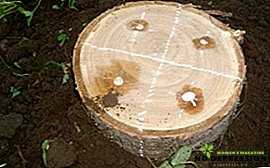
- If the stumps are dry, they should be soaked in water, and freshly chopped ones do not require it;
- At the top of the stump honor (on the growth of a tree), drill holes up to 2 cm in diameter and up to 15 cm in length;
- Holes make on all sides of the stump;
- Knead mycelium to separate fractions and fill all the holes with 350 g of mycelium;
- Cover the holes with clay or clay (cotton, wooden chopik);
- In the basement dig holes for hemp 15 cm and put the stumps in there;
- Pits fall asleep with sawdust or earth;
- In the warm season, hemp can be placed throughout the garden;
- Water daily with 3 liters of water per 1 square meter;
- Mushrooms will begin to germinate in 4-5 months, they can already be cut or broken.
Oyster mushrooms on stumps can bear fruit even in the cold season in specially equipped premises.
And some more information about growing oyster mushrooms at home can be found in the following video.





